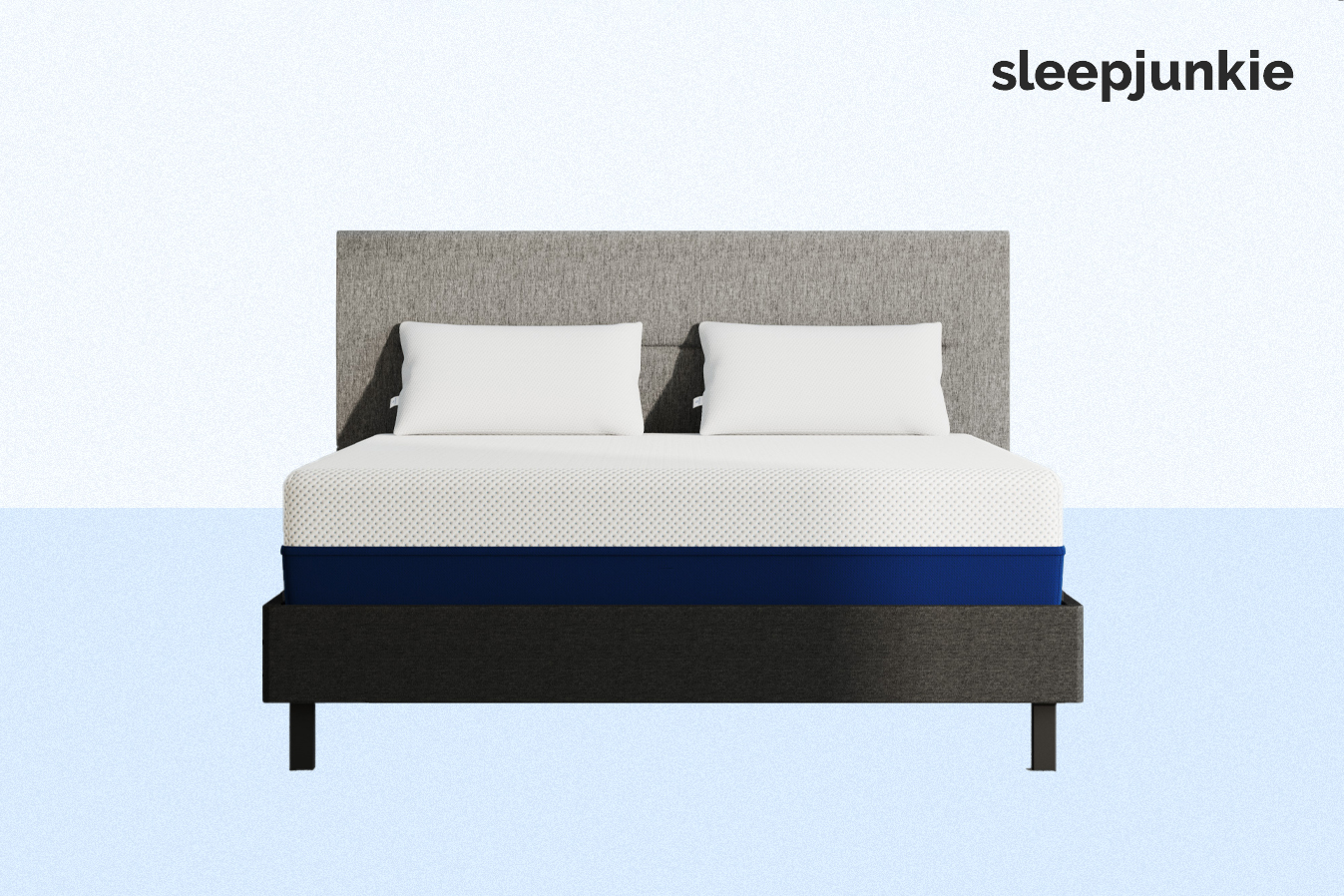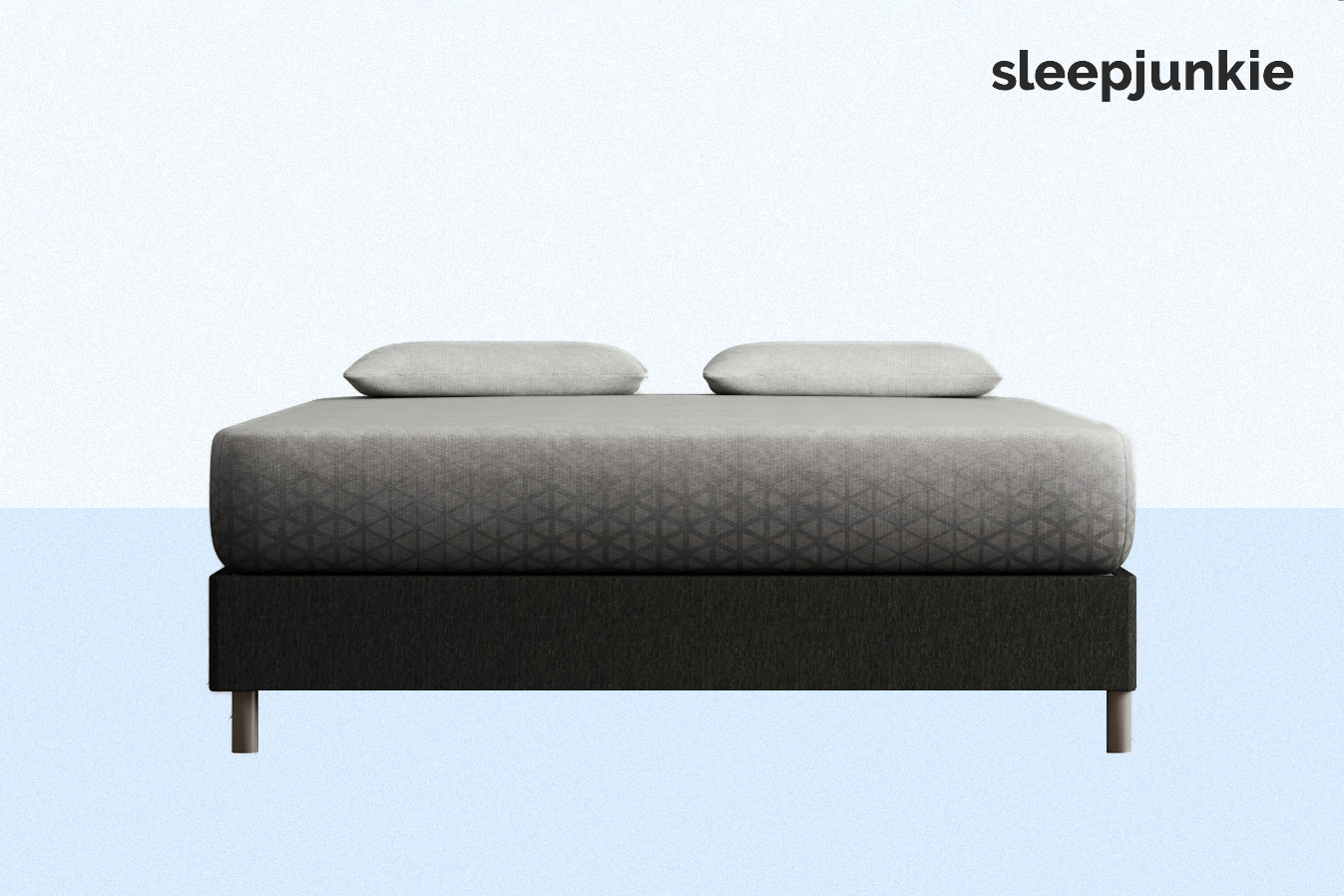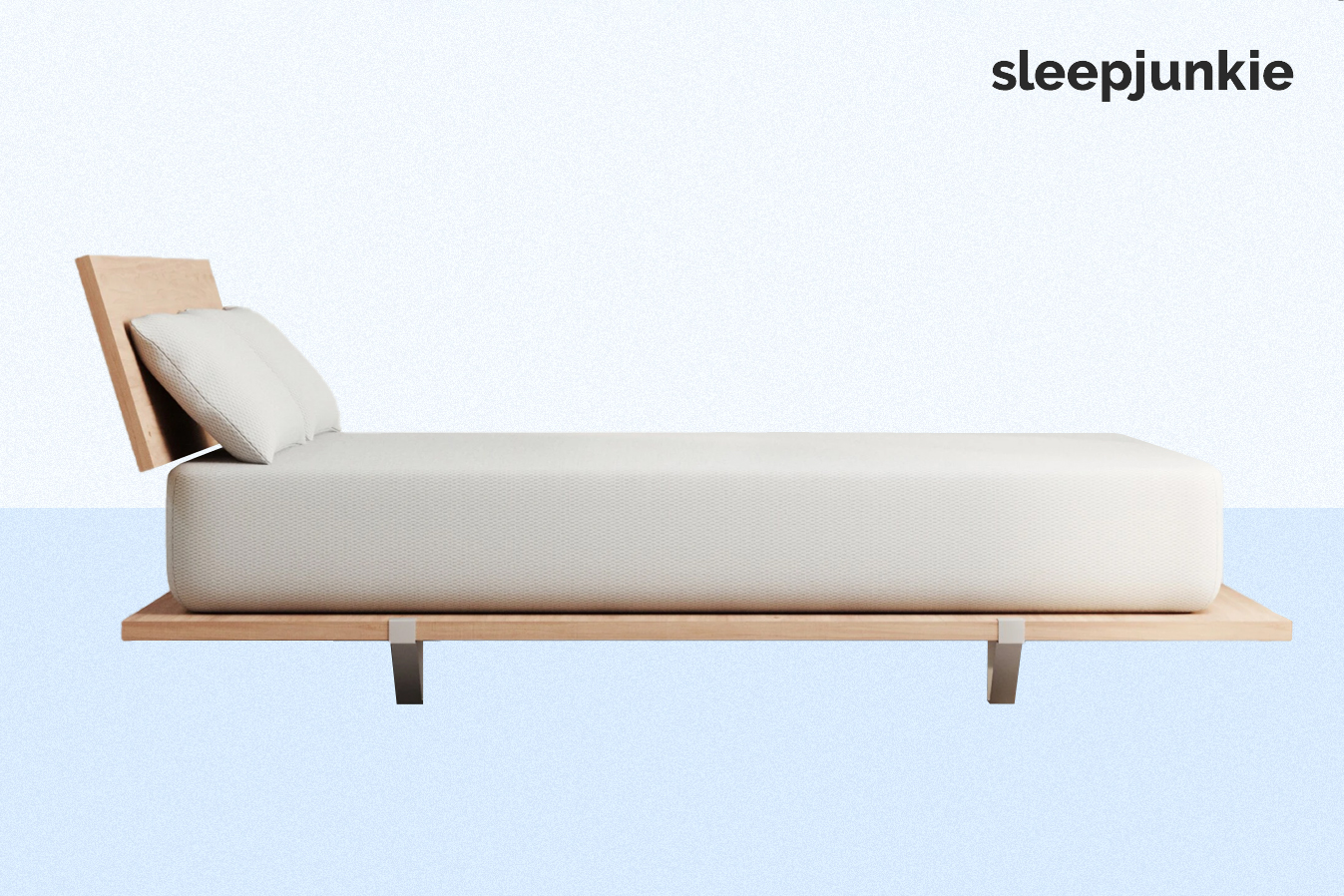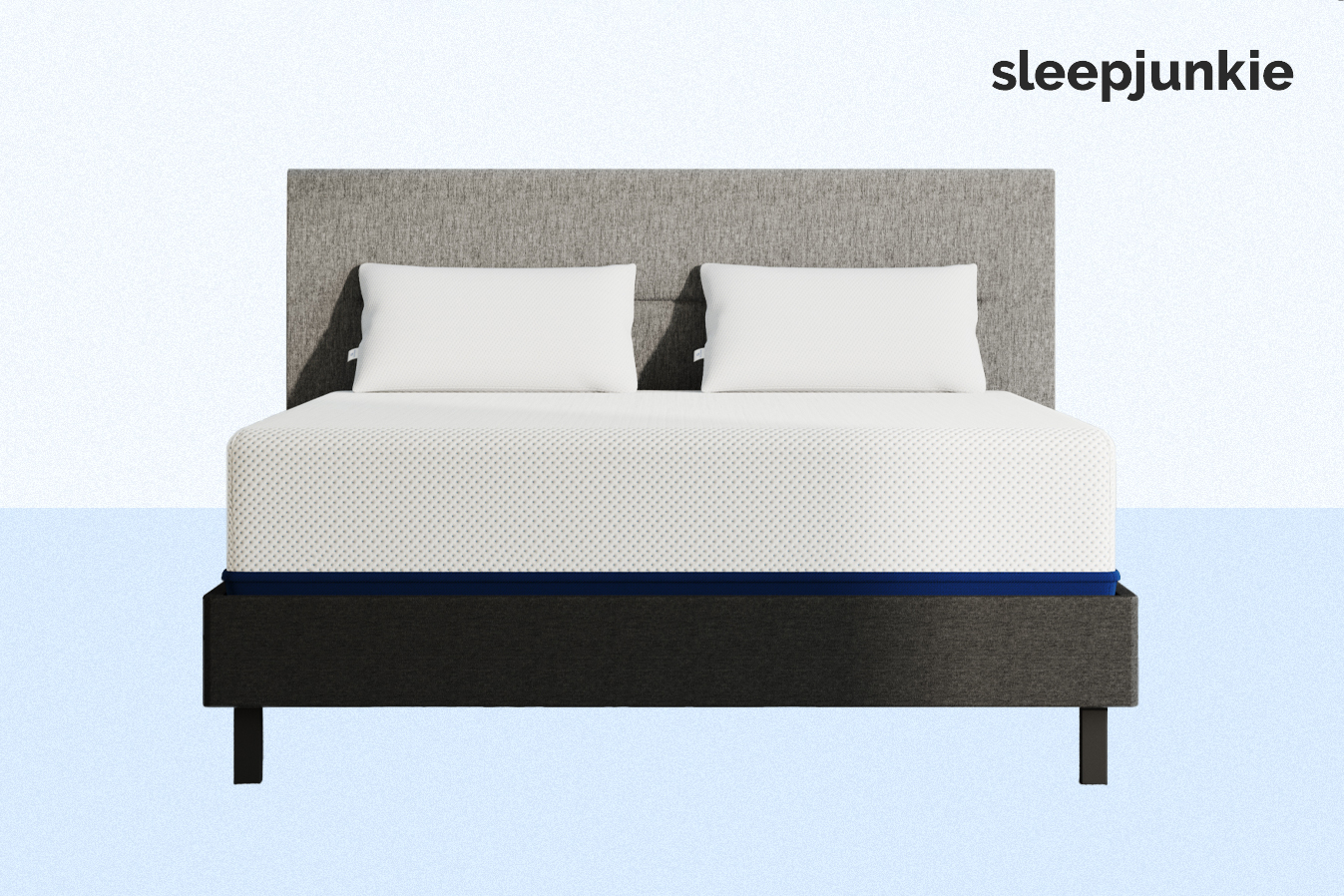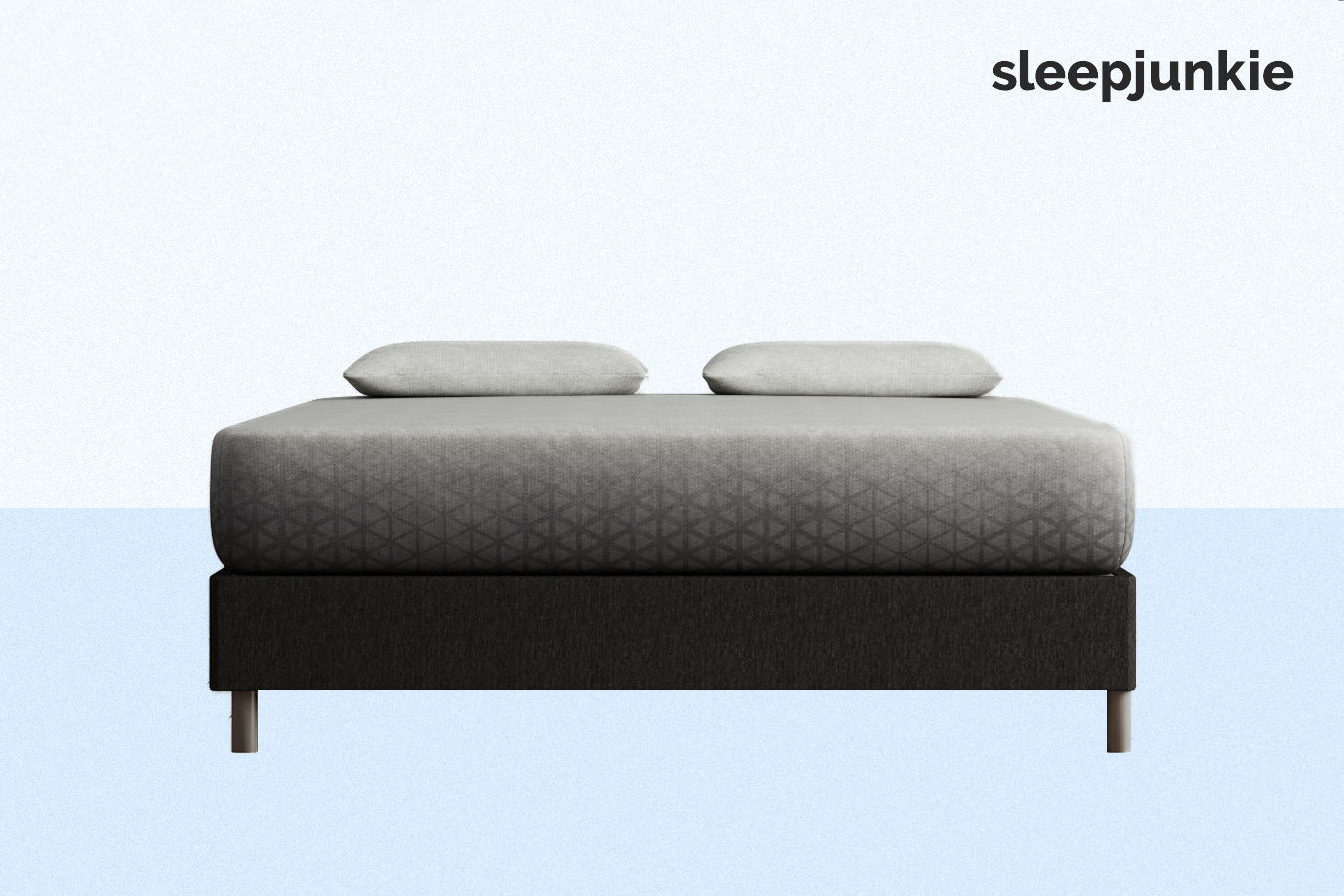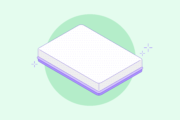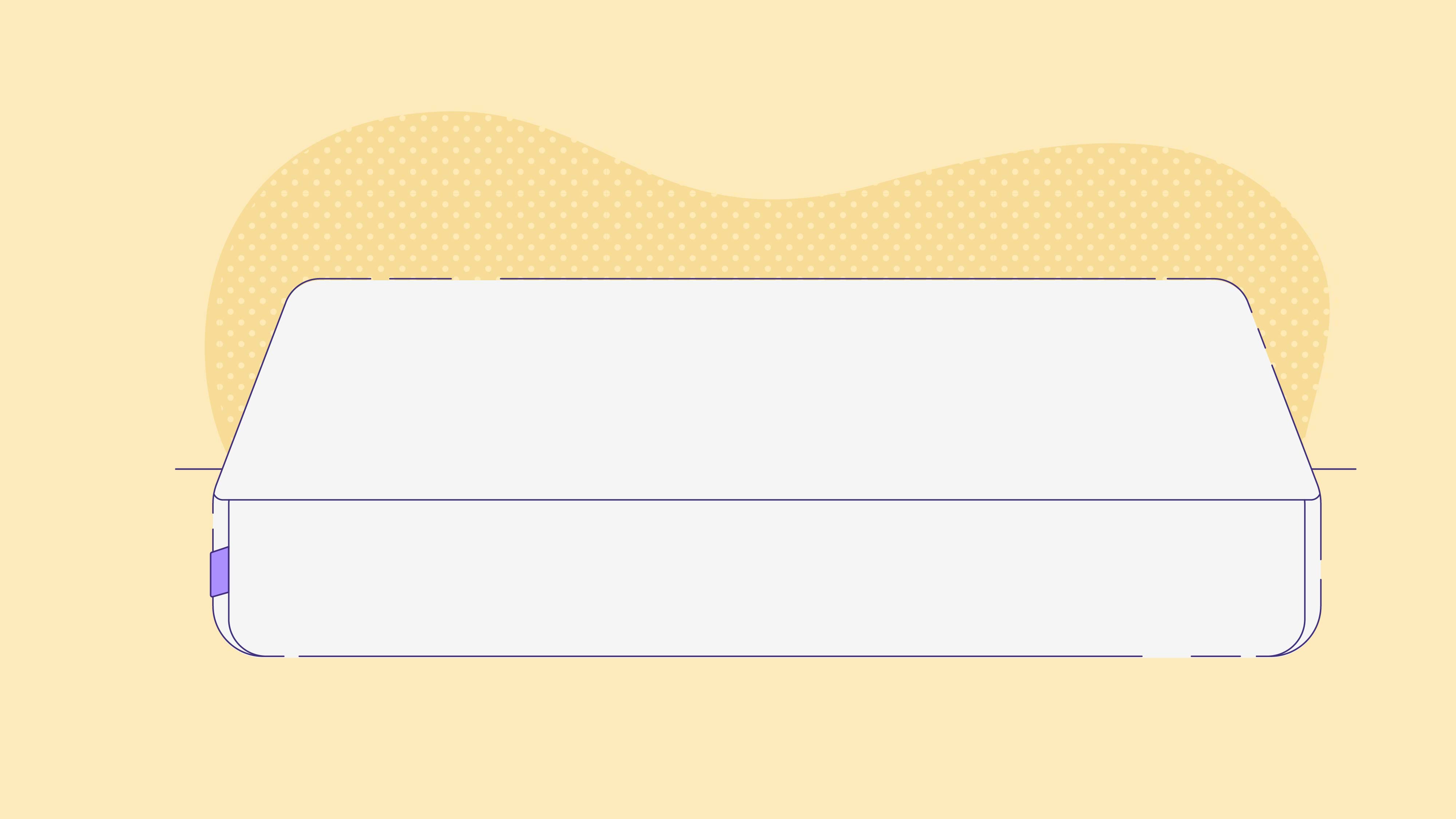
Best Mattress That Won’t Sag: Reviews and Buyer’s Guide

Sags are one of the most common issues with beds, especially older ones. Sagging beds are uncomfortable, unsupportive, and plain terrible for your health and sleep quality. However, you can minimize the number of sags you’ll have to deal with by getting the right type of mattress. Mattresses made of high-quality materials with durable support systems are less likely to sag.
In this guide, we take a look at some of the best mattresses that won’t sag quickly, helping you get a restful night’s sleep for years to come.
Best Mattress That Won't Sag
- Amerisleep AS3 — The Amerisleep AS3 is our editors’ pick for the best mattress that won’t sag because it features pressure-relieving, plant-based memory foam that is durable and resistant to sagging and indentations.
- Zoma Mattress – Our second favorite mattress that won’t sag is the Zoma Sports Mattress. This mattress is designed to withstand intense pressure without losing its shape or retaining heat and moisture.
Best Mattresses That Won’t Sag
One of the best memory foam mattresses is the Amerisleep AS3. It contains high-quality, durable memory foam built to prevent sagging and support your spine so you sleep pain-free. With a medium feel, the AS3 is a great option for side sleepers, combo sleepers, petite people, and couples.
The bed has a lightweight and airy mattress cover atop three layers of foam.
The top layer of the mattress contains Bio-Pur®. This plant-based memory foam is cooler and more durable than traditional memory foam, so it’s less likely to develop deep sags. At the same time, Bio-Pur® is excellent at relieving pressure, so you can wake up pain-free.
Beneath the Bio-Pur® is the Affinity layer with HIVE®, a zoned support technology. The layer is soft around your hips and shoulders, but firm around your back, head, and legs, to promote a neutral spine and minimize pressure points.
The base of the bed is called durable Bio-Core® foam. This sturdy layer helps prevent sags so you can enjoy the AS3 for years to come.
The Amerisleep AS3 comes with a 100-night sleep trial and a 20-year warranty. Amerisleep mattresses are made in the USA and ship for free within the contiguous U.S.
AMERISLEEP AS3
- Bio-Pur® memory foam is cool and durable
- HIVE® technology provides cushioning for the hips and shoulders
- Bio-Core® base foam minimizes sags and extends the bed’s lifespan
If you struggle with chronic pain, are an active individual, or are a hot sleeper, the Zoma Mattress may be a good choice for you. With its foam construction, the Zoma Mattress is built to stay cool and stable, so you won’t have to worry about uncomfortable sinking and sags.
The first layer of the Zoma Mattress is made up of gel memory foam with Triangulex™ technology. The memory foam contours to your curves for instant pain relief, while the gel infusion soothes your body and dissipates body heat.
The Triangulex™ technology is designed to evenly distribute your body weight and prevent pressure points. The layer is firm around your back for extra support while being extra cushiony around your hips and shoulders so you don’t experience pressure build-up or lower back pain.
Up next in the Zoma Mattress is Reactiv™ foam, a latex-like foam built to prevent sinkage and that “stuck” feeling in bed. This makes it easier to shift positions in bed, especially since some memory foam beds can feel stiff.
The base of the bed is Support+ poly-foam. It supports the upper layers, prevents sags, and promotes a neutral spine.
The Zoma Mattress is made in the USA and CertiPUR-US® certified, meaning the foam doesn’t contain harmful chemicals and won’t off-gas. With the Zoma Mattress, you receive a 100-night sleep trial, a 10-year warranty, and free shipping and returns.
ZOMA MATTRESS
- Triangulex™ technology alleviates pressure points and evenly distributes body weight
- Reactiv™ layer adapts to your movements and prevents sinking
- Support+ reinforces the mattress’s layers
You don’t have to break the bank to get a mattress that won’t sag on you. The Vaya Mattress is an affordable yet high-quality foam mattress and its medium firmness works for a variety of sleeping positions and body types.
The Vaya Mattress is 12 inches tall and contains two foam layers: 3 inches of Vaya Comfort Foam and 9 inches of Vaya Support Foam. The mattress’s cover is soft, breathable, and durable against wear.
Vaya Comfort Foam cushions your body’s curves without causing you to sink, so you lay on top of your bed versus inside of it.
The Vaya Support Foam provides a stable base for the upper layer while also preventing deep sags or lumps.
Both layers of the Vaya Mattress are CertiPUR-US® certified, so you can sleep peacefully knowing your mattress is free of harmful additives. The Vaya Mattress includes a 100-night sleep trial and a 10-year warranty.
VAYA MATTRESS
- Affordable, yet durable mattress
- Suitable for many types of sleepers
- Vaya Support Foam supports the spine and prevents wear
The Amerisleep AS5 Hybrid has a complex and durable construction. The AS5 Hybrid is Amerisleep’s softest and thickest mattress, with 3 inches of Bio-Pur®, 2 inches of Active Flex, 8 inches of pocketed coils, and 1 inch of base foam.
Sagging is a real issue, especially for plus-sized sleepers. However, the Active Flex layer reduces excessive sinkage and prevents your spine from coming out of alignment. The Active Flex’s extra bounce so you stay lifted. With its Active Flex layer, the AS5 Hybrid is a good option for larger people.
The pocketed coils in the AS5 Hybrid are wrapped in thin fabric to improve the bed’s durability and prevent the coils from breaking. The coils on the sides of the mattress are firmer for solid edge support, which protects you from rolling off the edge at night. The coils also prevent the edges from sagging.
Like other Amerisleep mattresses, the AS5 Hybrid comes with a risk-free 100-night sleep trial and a 20-year warranty covering sags deeper than 0.75 inches.
AMERISLEEP AS5 HYBRID
- Bio-Pur® foam helps sleepers stay cool and cushioned
- Active Flex layer prevents uncomfortable sinkage
- Pocketed coils minimize sagging and maximize edge support
Why Do Mattresses Sag?
Mattresses all sag inevitably, but some mattresses are more prone to developing sags than others. Factors including low-quality materials, an unsupportive foundation, damage, uneven weight distribution, and age all impact a mattress’s lifespan.
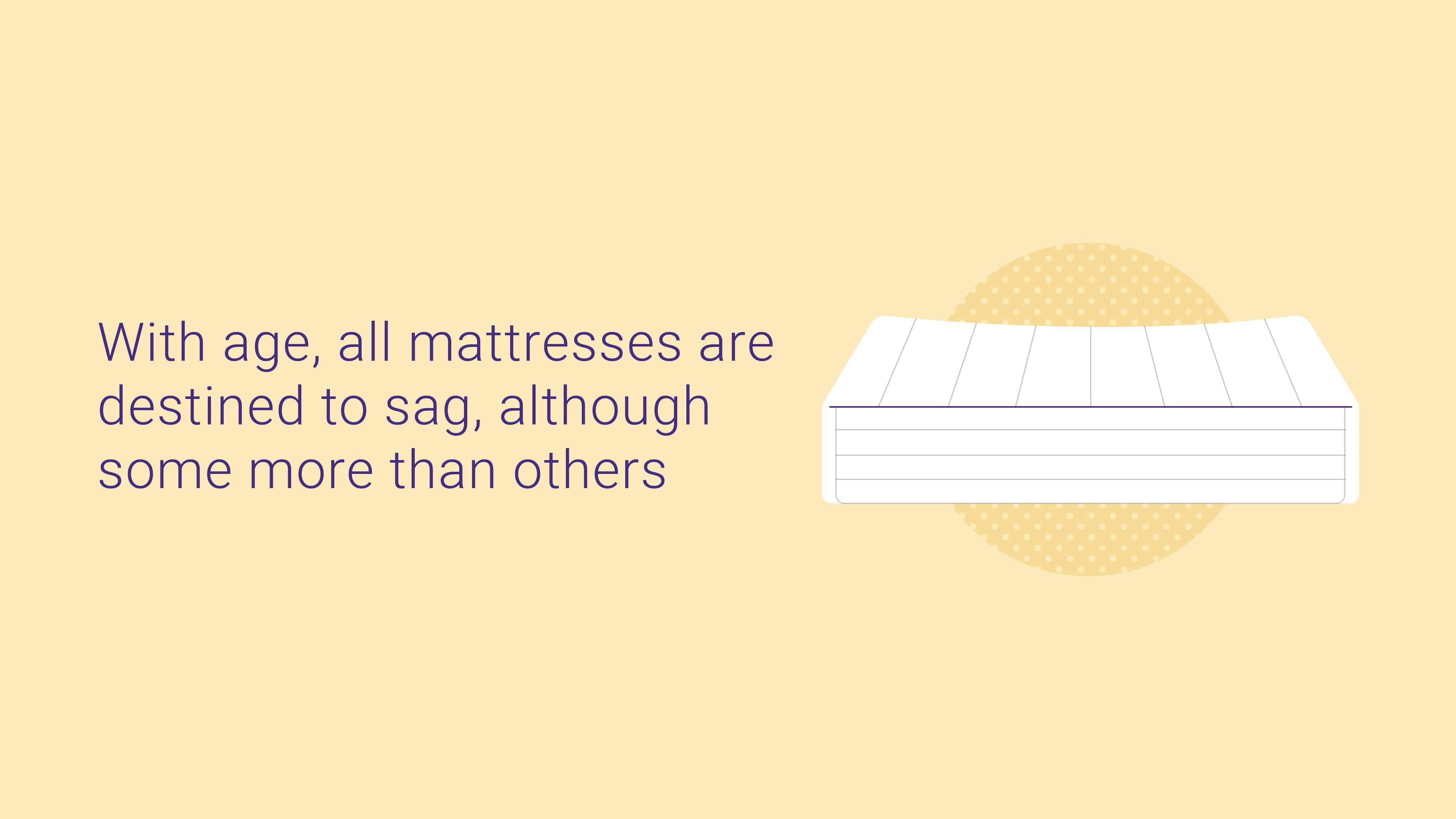
Cheap Materials
One of the biggest reasons we recommend avoiding the cheapest mattresses you can find is because cheap mattresses contain poor, low-quality materials.
Low-quality foam fills and coils are prone to sags, lumps, and breakage. They simply aren’t durable enough to stand the test of time and support your body long-term.
Although you may have saved money on your initial purchase, you’ll likely have to replace your cheap mattress sooner than you hoped.
Poor Foundation
If your mattress foundation is either incompatible with your bed or poorly constructed, it may play a role in your saggy mattress. Using the wrong foundation for your mattress also voids most mattress warranties, so even if your bed ends up sagging, you’ll be held responsible and the manufacturer won’t cover the replacement cost.
Placing your mattress directly on the floor can also cause it to break down quickly since dust, dirt, mold, and mildew can develop faster.
Improper mattress foundations include:
- Bed frames without slats
- Slats further than 3 inches apart
- Box springs for anything other than innerspring beds
- The floor
Uneven Load
If you tend to sleep on one side of the bed, or you share your bed with another person, most mattresses tend to start sagging and developing lumps quickly. This is because one section of the bed is bearing the brunt of all the weight without ever getting a break, so it’ll wear down rapidly.
Usually, you need to rotate or flip a mattress to minimize wear and sagging. However, most beds don’t need to be flipped unless clearly and rather should just be rotated.
Physical Damage
All types of physical damage can rapidly wear down your mattress. This includes jumping on the bed, spilling liquid on the bed, flipping over an unflippable mattress, or leaving your mattress in its box for too long. All of these usually void mattress warranties, but they can also cause your mattress to sag.
Old Age
With age, all mattresses are destined to sag, although some more than others. Sagging with age is inevitable, even with the best of care. Mattresses aren’t meant to last forever, but proper maintenance can still minimize sagging throughout the years.
Impacts of Sleeping on a Sagging Mattress
Sags on a mattress aren’t just unsightly, but they can lead to muscle and joint pain, trouble sleeping, headaches, and allergic reactions.
Achiness
The big issue with saggy mattresses is that they’re no longer supportive, meaning your spine won’t be aligned. A misaligned spine will leave you sore and uncomfortable. For people with preexisting health conditions and chronic pain, a saggy mattress will only worsen your current state.
You’ll know if it’s your mattress worsening or causing your pain if:
- You wake up stiff and achy
- Your pain is minimal during the day but worse at night or upon waking up
- You wake up pain-free when you use different beds
Insomnia and Trouble Sleeping
A saggy, unsupportive mattress plays a huge role in your sleep latency and duration. If your bed is lumpy, flat, and uncomfortable, you might struggle to get comfortable and, instead of sleeping, you’re left tossing and turning.
Some signs your mattress is leading to insomnia include:
- It takes a prolonged period to get comfortable and finally fall asleep
- You frequently wake up in the middle of the night, stiff and uncomfortable
Insomnia can lead to a whole array of issues, including irritability, anxiety, headaches or migraines, and poor memory.
Headaches and Migraines
When your spine is misaligned, this includes your neck and shoulders. The poor alignment leads to neck and shoulder pain, which compresses your nerves and blood vessels.
Lack of blood flow to your head leads to headaches and migraines, and it’s a vicious cycle—the headaches make it difficult to sleep, and poor sleep only worsens your headaches.
Allergic Reactions
Saggy mattresses are most commonly old mattresses, and older beds are more likely to contain harmful allergens, including:
- Dust and dust mites
- Dander
- Mold and mildew
Not only is a bed full of allergens gross, but it can trigger allergic reactions like itchy skin and eyes, runny nose, difficult breathing, and more.
Once allergens begin building up inside of a mattress, there’s little you can do about them. At this point, it’s better to replace your mattress entirely versus trying to repair its sags.
How to Minimize Mattress Sags
Although sags will appear in every mattress over time, there are simple ways to keep your bed from developing sags too quickly and reduce the depth of sags. We recommend using a compatible foundation for your mattress, but also using a mattress with a high-quality support layer.
Use the Right Foundation
The wrong mattress foundation can make or break your mattress, literally. Different mattress types require specific foundations to prevent them from sagging or wearing down.
Using the wrong foundation voids most mattress warranties, as well. The following foundation list can help you determine the best type of support for your mattress.
Memory foam mattresses, natural latex beds, and hybrid mattresses work best with:
- Solid foundations
- Platform beds
- Wood or metal slats
- Bunkie boards
- Adjustable beds
Innerspring mattresses work best with:
- Box springs
- Bed slats
- Platform beds
Look For Beds With Solid Support Systems
An unsupportive bed is bound to start sagging quickly. Look for a bed with a strong support system, which includes the type of durable materials it includes—foam or coils—and its edge support quality.
When choosing a new mattress, make sure its support system makes up at least half of the bed. So, if the mattress you’re interested in is 12 inches thick, the support system should be no thinner than 6 inches to ensure the bed is adequately reinforced.
A thick, high-quality support core ensures your bed won’t start sagging deeply. Not only that, but a good support system ensures your body is well-aligned.
Responsiveness is also important in a support system, particularly if you’re looking for a mattress for combination sleepers. A buoyant feel means the mattress will adapt quickly to changes in movements.
FAQs
Do mattress warranties cover sagging?
Yes, most mattress warranties cover sags beyond a specific depth.
If you violate the warranty’s guidelines and your bed sags—such as by jumping on your bed or using the wrong foundation—this will void the warranty. In this case, the manufacturers won’t cover the costs of repair or replacement and you’ll have to pay for it on your own.
How long should a mattress last before sagging?
Usually, mattresses last between 7 to 10 years before they start sagging excessively.
However, if your mattress starts sagging deeply a couple of years before this, it’s best to replace or repair it as soon as you can. Most mattress warranties cover mattress sags, so it’s worth making a warranty claim to repair your bed.
Is it normal for a new mattress to sag?
No, new mattresses shouldn’t sag. If your new mattress is sagging, it’s likely a sign that the mattress contains cheap materials or is defective.
In case the bed is defective, you can make a warranty claim and get it replaced. If the bed just turns out to be low-quality, see if you can return it for a full refund. Be sure not to treat your new mattress poorly, because leaving your mattress in the box for too long or jumping all over it—new or not—can cause it to start sagging.
Do all mattresses sag?
Yes, most traditional mattresses will sag with time. However, the depth of sags will vary depending on the quality of materials and the type of bed.
With this in mind, water and air mattresses—both of which you can refill as needed—won’t sag. They may lose some water or air with time, but they’re easy to refill. Still, water and air mattresses generally aren’t a good long-term mattress choice.
Do firm mattresses last longer than plush ones?
Not necessarily. Although firm mattresses are stiffer than soft beds, they aren’t guaranteed to last longer.
Plush mattresses with high-quality materials and thick support layers can last just as long as firm mattresses without sagging, so long as you care for them properly.
Conclusion
A supportive mattress is a key to a good night’s sleep, and a bed with sags is anything but. While there is no such thing as an entirely sag-free mattress, you can find ones with thick support layers. Not only do support cores help you, but they also reinforce the mattress and extend its lifespan.
